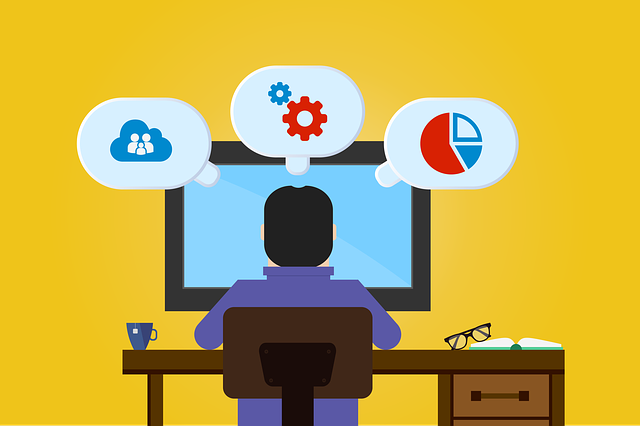What are the latest trends in software development?
Published:
 New tools, frameworks, and programming languages are emerging every day, and developers need to keep up with these changes to stay relevant in the industry. The rise of artificial intelligence and machine learning is creating new opportunities for software developers, while also presenting unique challenges that require new skills and knowledge. The demand for software applications is increasing in almost every industry sector, from healthcare to finance to education, creating an urgent need for professionals who can develop high-quality and innovative software solutions.
New tools, frameworks, and programming languages are emerging every day, and developers need to keep up with these changes to stay relevant in the industry. The rise of artificial intelligence and machine learning is creating new opportunities for software developers, while also presenting unique challenges that require new skills and knowledge. The demand for software applications is increasing in almost every industry sector, from healthcare to finance to education, creating an urgent need for professionals who can develop high-quality and innovative software solutions.
Here are five of the latest trends in software development that are worth paying attention to:
Cloud computing: Cloud computing refers to the delivery of computing resources, such as servers, storage, and databases, over the Internet. Instead of building and maintaining their own hardware and infrastructure, organizations can access these resources on demand from a cloud provider. Cloud computing has become increasingly popular in recent years, and it is expected to continue to grow in importance. There are several benefits to using cloud computing. One of the main benefits is scalability. With cloud computing, organizations can quickly and easily scale up or down as their needs change, without the need to invest in additional hardware. This allows them to be more agile and responsive to changing business needs.
Another benefit of cloud computing is flexibility. Cloud providers offer a range of different services, such as computing, storage, and networking, which can be customized and configured to meet the specific needs of an organization. This allows organizations to build and deploy applications in a way that best meets their needs.
Cost savings is another benefit of cloud computing. By using cloud services, organizations can avoid the upfront costs of building and maintaining their own infrastructure, as well as the ongoing costs of maintaining and updating it. This can result in significant cost savings over time.
Artificial intelligence and machine learning: Artificial intelligence (AI) and machine learning are technologies that enable computers to analyze data, make decisions, and learn from experience. They are becoming increasingly prevalent in a variety of industries, and software development is no exception. AI and machine learning can be used in a variety of applications, such as natural language processing, image recognition, and predictive analytics. These technologies have the potential to transform the way that software is developed and used, by enabling developers to build intelligent systems that can adapt and learn over time.
One of the main benefits of AI and machine learning is their ability to process and analyze large amounts of data. This allows developers to build applications that can make sense of data in real-time and provide insights and recommendations to users.
AI and machine learning also have the potential to improve the user experience by making it more personalized and intuitive. For example, a machine learning-powered recommendation engine can analyze a user’s past behavior and suggest content or products that are tailored to their interests.
DevOps: DevOps is a software development method that emphasizes collaboration, automation, and continuous delivery. The goal of DevOps is to increase the speed and efficiency of software development by breaking down traditional silos between developers and operations teams. Traditionally, software development and operations have been managed as separate functions, with developers focusing on writing code and operations teams responsible for deploying and maintaining it. This separation can lead to delays and inefficiencies, as developers and operations teams may not be aligned on goals and processes.
DevOps aims to address these issues by bringing developers and operations teams together and fostering collaboration and communication. This can be achieved through a variety of means, such as using agile development methods, automating processes, and implementing continuous integration and delivery.
The benefits of DevOps are numerous. By improving collaboration and communication, DevOps can help organizations to release software more quickly and with fewer errors. It can also help to reduce the time and effort required to fix problems, as developers and operations teams can work together to quickly identify and address issues.
Internet of Things (IoT): The Internet of Things (IoT) refers to the growing network of connected devices that are embedded with sensors, software, and networking capabilities. These devices can communicate with each other and with central servers, allowing them to collect and exchange data and perform actions based on that data. The IoT has the potential to revolutionize a variety of industries, including healthcare, manufacturing, transportation, and agriculture. It allows organizations to collect and analyze data from a wide range of sources, enabling them to make more informed decisions and improve efficiency.
As a software developer, you may be called upon to build applications or systems that are connected to the IoT. This can involve developing software that runs on IoT devices, as well as building backend systems that collect and analyze data from those devices.
To be successful in this area, it is important to be familiar with the latest technologies and protocols for building and connecting IoT devices. This can include technologies such as Bluetooth Low Energy, Zigbee, and LoRaWAN, as well as cloud platforms and analytics tools.
In addition to technical skills, it is also important to be familiar with the challenges and opportunities presented by the IoT. This can involve understanding the security and privacy concerns that are associated with connected devices, as well as the potential for data analytics and machine learning to unlock new insights and improve business outcomes.
Security: With the increasing reliance on software and technology, security has become a critical concern for organizations of all sizes. As software developers, it is important to be aware of the latest security threats and best practices for protecting against them. One of the latest trends in software security is the use of secure coding practices. This involves following best practices and guidelines when writing code, such as avoiding common security vulnerabilities and using secure libraries and frameworks.
Another trend is the use of security testing tools, which can help developers to identify and fix security issues before they are deployed. This can include tools for static analysis, which analyze code for vulnerabilities without executing it, as well as tools for dynamic analysis, which analyze code as it is running.
In addition to these technical measures, it is also important for software developers to be aware of the latest security threats and trends. This can involve staying up-to-date with industry news and updates, and participating in training and education programs to stay current on best practices.
By following these trends and best practices, software developers can help to ensure that their applications are secure and reliable, and can protect the organizations and users that rely on them.

 The year 2023 was full of various experiences for me. I took on the role of an Assistant Professor, and the journey had unexpected events like a major surgery, health issues within my family, starting a website, and picking up new hobbies. This post gives an honest overview of the good and bad moments that shaped my year. The foundation of everything in life is undoubtedly health. Without it, even the biggest achievements and detailed plans can fall apart. Health quietly influences our daily activities, professional goals, and personal relationships.
The year 2023 was full of various experiences for me. I took on the role of an Assistant Professor, and the journey had unexpected events like a major surgery, health issues within my family, starting a website, and picking up new hobbies. This post gives an honest overview of the good and bad moments that shaped my year. The foundation of everything in life is undoubtedly health. Without it, even the biggest achievements and detailed plans can fall apart. Health quietly influences our daily activities, professional goals, and personal relationships.  Ever wondered who the superheroes of the Java world are? Java Champions are like the rock stars of Java programming. They’re not just good; they’re exceptional! These are people who have shown their love for Java in outstanding ways. Java Champions are recognized as elite members of the Java community who have made significant contributions in various ways. Unlike certifications or titles that are earned through formal channels, becoming a Java Champion is an acknowledgment of a person’s ongoing and sustained efforts in the Java ecosystem.
Ever wondered who the superheroes of the Java world are? Java Champions are like the rock stars of Java programming. They’re not just good; they’re exceptional! These are people who have shown their love for Java in outstanding ways. Java Champions are recognized as elite members of the Java community who have made significant contributions in various ways. Unlike certifications or titles that are earned through formal channels, becoming a Java Champion is an acknowledgment of a person’s ongoing and sustained efforts in the Java ecosystem.  On November 24th, we observe Teachers’ Day in Turkey, a day that holds great importance and emphasizes the crucial role of education in our society. Mustafa Kemal Atatürk, a military leader and statesman, understood how education could profoundly shape a nation’s destiny. He believed that the progress and prosperity of a society were closely tied to the quality of its education system. Atatürk firmly believed that a well-educated and enlightened citizenry was the cornerstone for building a modern, democratic, and forward-thinking nation.
On November 24th, we observe Teachers’ Day in Turkey, a day that holds great importance and emphasizes the crucial role of education in our society. Mustafa Kemal Atatürk, a military leader and statesman, understood how education could profoundly shape a nation’s destiny. He believed that the progress and prosperity of a society were closely tied to the quality of its education system. Atatürk firmly believed that a well-educated and enlightened citizenry was the cornerstone for building a modern, democratic, and forward-thinking nation.